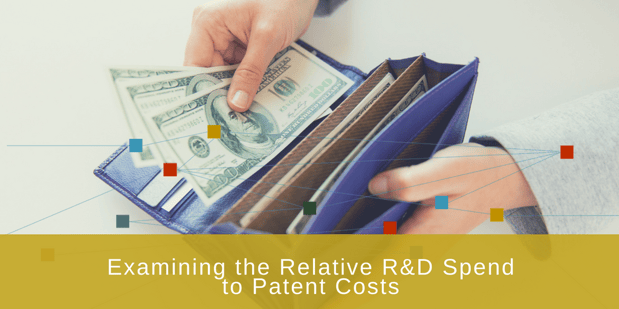 Product development is an expensive venture. On one side, there are the costs of researching the market and developing the solutions; on the other, there are the costs of protecting those innovations through obtaining patents.
Product development is an expensive venture. On one side, there are the costs of researching the market and developing the solutions; on the other, there are the costs of protecting those innovations through obtaining patents.
It makes sense that research and development would cost more than the patent applications and maintenance each year. After all, many of the ideas brought forth in the R&D phase may never come to fruition. How much more is typical? Let’s consider a few scenarios.
Making the Investment in R&D
In many technology companies, the investment into research and development falls somewhere around 10% of gross revenues, depending on the company and the type of product. A $100 million dollar company would therefore spend around $10 million on research and development.
A pharmaceutical company, however, may increase the amount spent on R&D. For instance, Roche pulled in over $48 billion. On research and development in 2015, they spent over 20% of that, to the tune of $9.67 billion.
Let’s compare that to the dollars spent on pursuing patents.
Ratio of Patents to R&D
We previously discussed that the cost of obtaining a single patent family with coverage in the US, EU, and Japan can be around $100,000. Those patents must then be maintained from year to year in order to avoid the risk of those patents expiring or losing effectiveness. This can cost around $75,000 over the course of twenty years.
It’s a lot of money, frankly, which means that patents are often only filed for products and services that come to fruition through the research and development phase. In many cases, the money spent in R&D isn’t even on the research portion but on development—or maintaining the technology already created. For these reasons, the ratio of patent spend to R&D spend can be quite small—even smaller for some companies than others.
For most companies, less than one patent is filed for every $1 million spend on R&D. Some file at an even more cautious rate. Why file for a patent on products or technology that will never hit the market? The amount needed to file and maintain those patents can be prohibitively expensive.
A Different Approach
The case for not filing a patent on discoveries within your research and development activities seems a strong one. However, you must consider what could happen if a competitor develops similar technology and manages to bring it to market. Your work within the R&D phase then cannot be protected. You essentially give away any of the time and discoveries you already made, simply because you chose not to patent the technology.
How can you avoid doing this? By simply putting the patent process first. If you seek out IP intelligence before you even begin the R&D process, you can have a better understanding of what companies are already moving within your field. You’ll know if competitors are on the same track, and if they might be developing innovations that could steal your thunder.
Regular investigations into the patent landscape could show you any new patent filings that creep close to research you’ve already started. You’ll know if it’s time to start protecting your intellectual property rather than letting it fall by the wayside.
If you’d like to learn more about how IP intelligence could fuel your R&D process and your patent filing decisions, give us a call to schedule a free strategy session. We’d love to help you get and stay on the right track.



